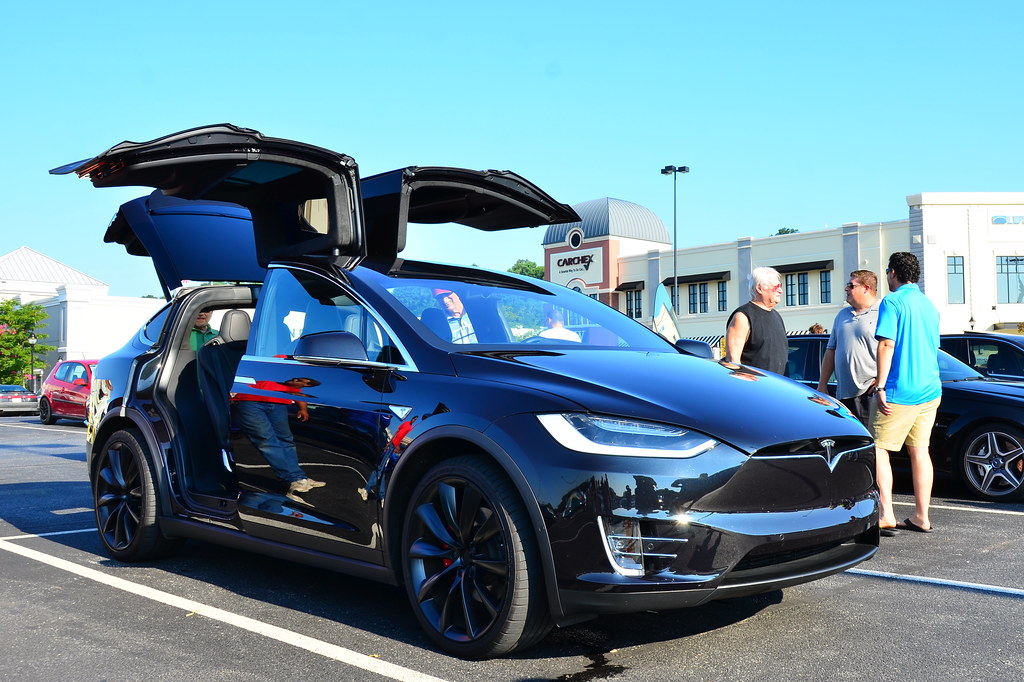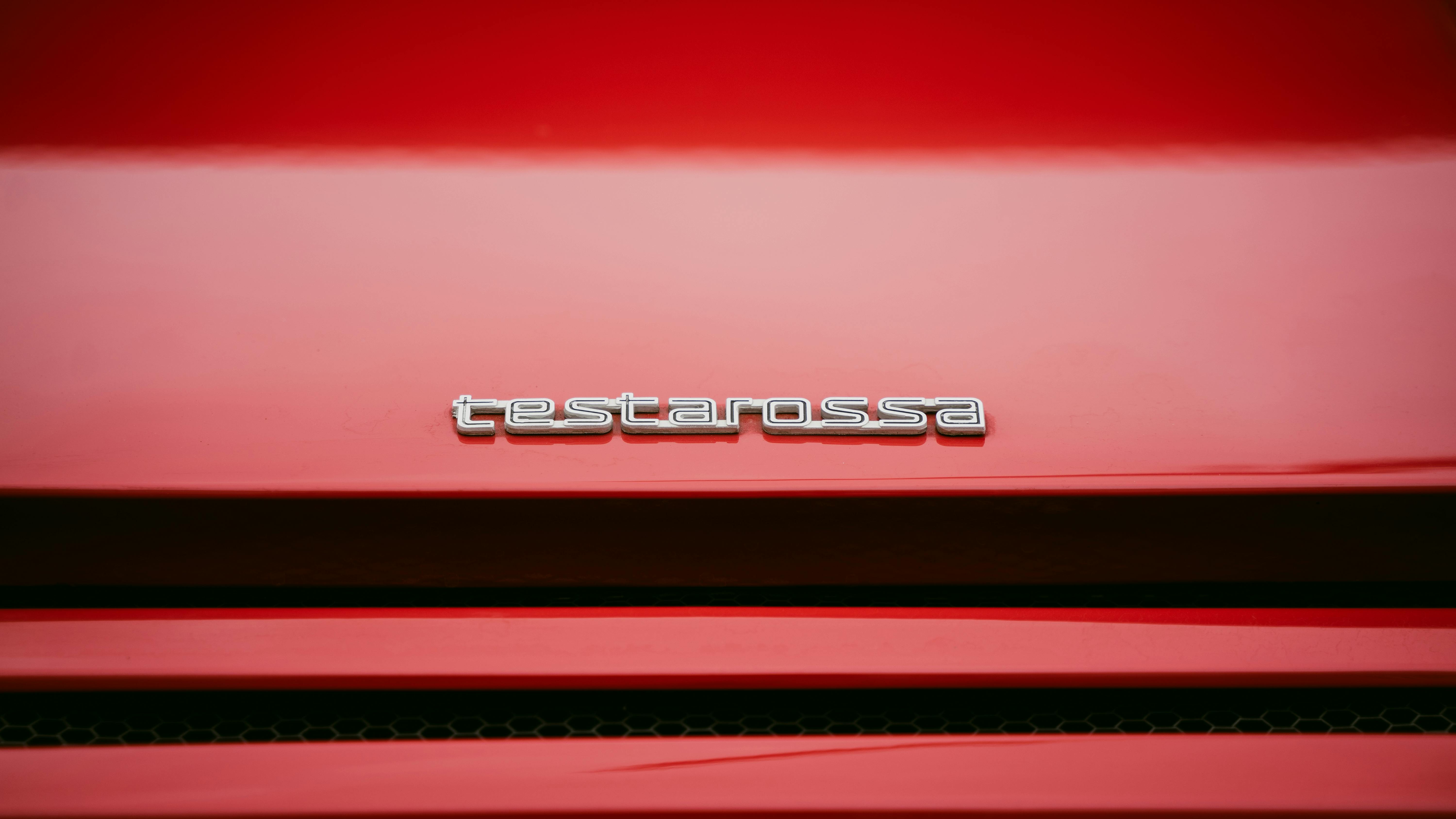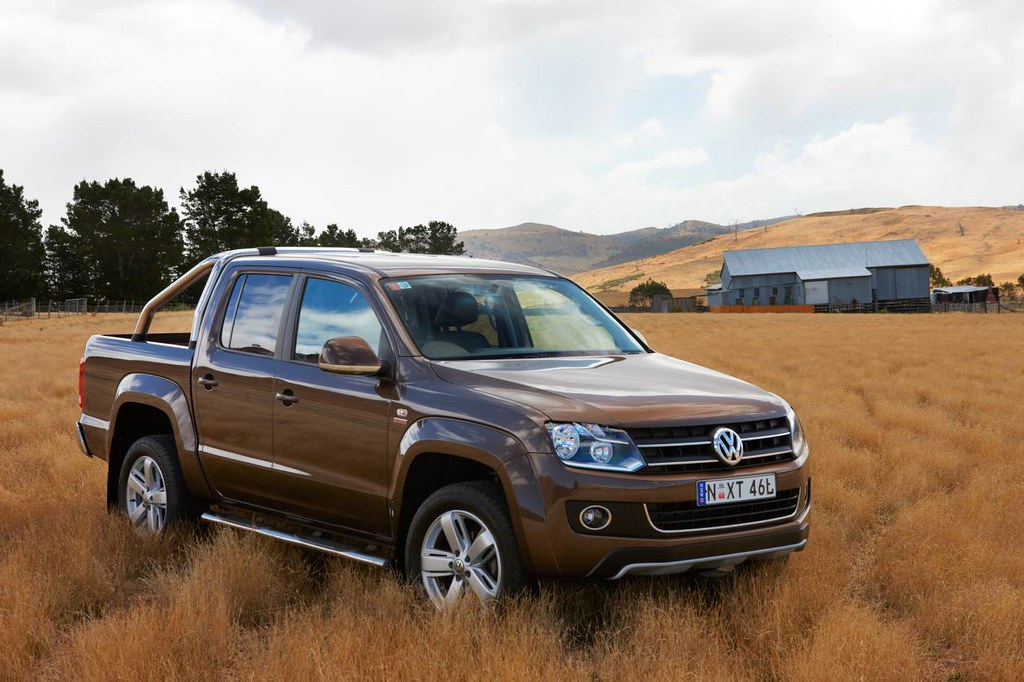
The 1990s, often viewed by some as an automotive dark age filled with uninspired niche vehicles and evolutionary dead ends, is now experiencing a remarkable resurgence in the collector car market. While the decade did give us some truly questionable designs, it was also studded with mechanical gems that have since ascended to bona fide collectible status, commanding prices to match their renewed desirability. For discerning enthusiasts and savvy investors alike, this era offers a fascinating blend of established icons and future classics.
Indeed, it’s a thrilling time to be a car lover with a soft spot for the ’90s. The collective reevaluation of these once-overlooked machines has pushed many into the realm of significant investment, while others still offer incredible value for those looking to get into the hobby. We’re talking about vehicles that blend cutting-edge (for their time) technology with distinctive styling and driving experiences that simply aren’t replicated in modern cars.
Whether you’re reliving rose-tinted memories of these vehicles or discovering their charms for the first time, one thing is clear: the market for 1990s classics is red hot. From sleek sports cars to rugged SUVs and performance sedans, this is an era brimming with vehicles that capture the imagination and ignite a passion for driving. Let’s dive into some of the most compelling examples that are already commanding serious attention.
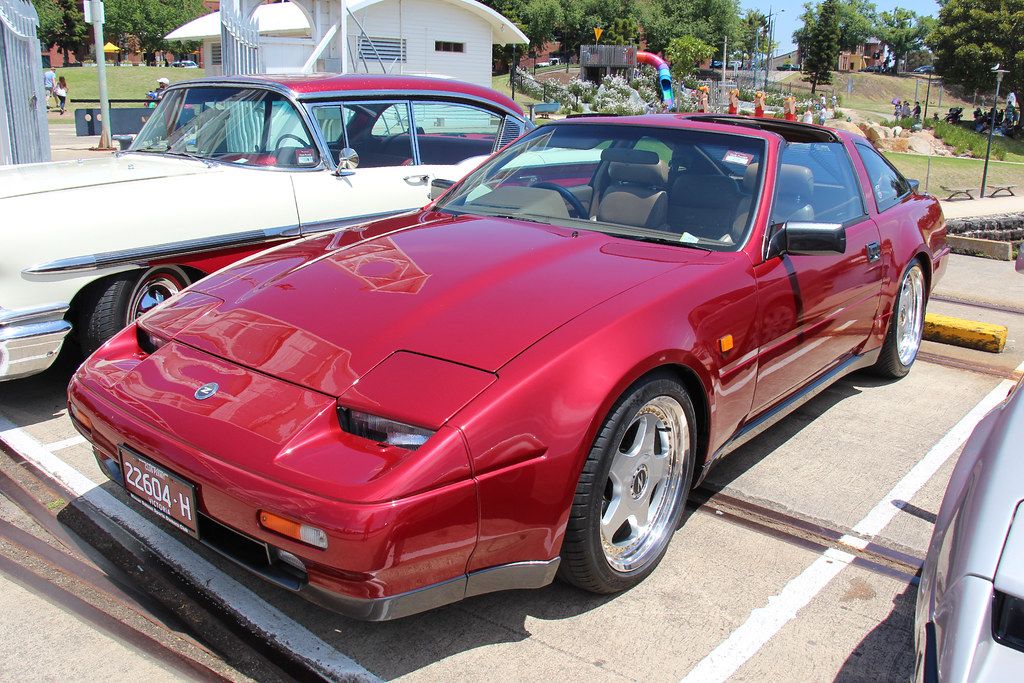
1. **1991-1996 Nissan 300ZX Twin Turbo**When the Z32-generation Z sports car arrived, it wasn’t just another car; it was a technological tour de force that single-handedly recaptured the model’s magic. After its somewhat bloated predecessor leaned more towards grand touring, the 300ZX Twin Turbo boldly reasserted the Z’s performance pedigree. Its sleek, aerodynamic look was a clear statement of intent, promising speed and sophistication in equal measure.
Underneath that stunning bodywork lay a heart of pure performance: the VG30DE twin-turbo, intercooled V-6. This powerhouse engine delivered a jaw-dropping 300 horsepower and 283 lb-ft of torque, numbers that were truly wild for its time. This represented a whopping 50 percent increase in power over its single-turbo predecessor, showcasing Nissan’s commitment to pushing boundaries and delivering exhilarating driving experiences to its customers.
But the tech didn’t stop at the engine. Nissan also integrated its HICAS active rear steering system, a sophisticated innovation that contributed to world-beating handling. This advanced system, a marvel of engineering, helped the 300ZX Twin Turbo snap up our coveted 1990 Import Car of the Year award. It was a testament to Nissan’s holistic approach to performance, ensuring that power was matched by precision and control.
Today, examples of the 300ZX Twin Turbo that have survived in good condition command ever-increasing prices. While prices for the cleanest examples have seen a slight fluctuation, an excellent 300ZX turbo still firmly sits as a $40,000 car as of this writing. Its blend of classic ’90s style, potent performance, and advanced technology makes it a cornerstone of any serious ’90s collection.
Car Model Information: 1990 Nissan 300ZX GS
Name: Nissan 300ZX
Class: Grand Tourer
Manufacturer: Nissan
Production: 1983–2000
Assembly: ubl
Aka: Nissan Fairlady Z
Layout: Front-engine, rear-wheel-drive layout
Predecessor: Nissan Fairlady Z (S130)
Successor: Nissan 350Z
Categories: 1990s cars, 2+2 coupés, All articles needing additional references, All articles with unsourced statements, Articles needing additional references from May 2021
Summary: The Nissan 300ZX is a sports car that was produced across two different generations. As with all other versions of the Z, the 300ZX was sold within the Japanese domestic market under the name Fairlady Z.
It was sold in Japan from 1983 to 2000 and in the United States from 1984 to 1996, the 300ZX name followed the numerical convention initiated with the original Z car, the Nissan Fairlady Z (S30), which was marketed in the U.S. as the 240Z. The addition of the “X” to the car’s name was a carryover from its predecessor, the 280ZX, to signify the presence of more luxury and comfort oriented features. The first generation 300ZX known as the Z31 model was produced from 1983 through 1989 and was a sales success becoming the highest volume Z-car for Nissan.
To become even more competitive in the sports car market, the second generation 300ZX was driven up-market. It was redesigned to be faster and to feature more advanced technology, but came with a higher price than its predecessor, with consecutive price increases each model year of availability. As such, sales dwindled each year, a trend in the higher end sports car market at the time, and Nissan placed a hiatus on selling new Nissan Z-Cars to the US after the 1996 model year, though the car would continue to be sold in the Japan domestic market until 2001 in low production numbers.
Car and Driver placed the Z32 on its Ten Best list for seven consecutive years, each model year of its availability in the United States. Motor Trend awarded it as the 1990 Import Car of the Year. The Nissan 350Z, officially the Z33 generation Z-Car, succeeded the 300ZX in 2003.
Get more information about: Nissan 300ZX
Buying a high-performing used car >>>
Brand: Nissan Model: 300ZX
Price: $24,597 Mileage: 21,680 mi.
Read more about: Ignored No More: Unearthing the 16 Most Underrated Foreign Classic Cars of the 1990s

2. **1992-1999 Chevrolet Tahoe/GMC Yukon 2-Door**There was a time when the 2-door Chevrolet Tahoe and GMC Yukon, built on the GMT400 platform, were ubiquitous across American roadways. These trucks, along with their C/K pickup and Suburban siblings, formed the backbone of American utility and family transport. However, as the years have passed, finding these iconic vehicles in good, unmolested condition has become increasingly difficult, transforming them from common sights into desirable collectibles.
This scarcity, combined with a collective wave of nostalgia and rose-tinted memories, has led enthusiasts to reevaluate these once-overlooked vehicles. To modern eyes, the GMT400 crew, particularly the slick two-door variants, present an upright, honest, and undeniably handsome aesthetic. Their straightforward design and rugged appeal stand in stark contrast to the often overly stylized SUVs of today, giving them a timeless quality.
Crucially, unlike many exotic cars that often come to mind when thinking about collectibles, these Tahoes and Yukons remain reasonably priced, even after reaching their current peak values. Expect to pay anywhere between $20,000 and $40,000 for a well-kept example, a figure that offers substantial value for a vehicle with such character and capability. This accessibility makes them a fantastic entry point into the world of classic truck collecting.
What truly sets these trucks apart, beyond their classic looks and growing appreciation, is their inherent usability. With available 4WD, they possess enough power to tow recreational toys or confidently tackle a weather-wracked road. These Chevy trucks are renowned for lasting decades with proper attention, and the really good ones command a well-deserved premium, representing an investment that is well worth the effort to find and cherish.
Car Model Information: 2019 Chevrolet Tahoe LT
Name: Chevrolet Tahoe,GMC Yukon
Manufacturer: General Motors
Production: 1991–present (Yukon),1994–present (Tahoe)
Class: Full-size SUV
Related: Cadillac Escalade,Chevrolet Suburban,Chevrolet Silverado,Hummer H2
Layout: Front-engine, rear-wheel-drive layout
Predecessor: Chevrolet K5 Blazer
Caption: 2022 Chevrolet Tahoe RST (fifth generation)
Categories: 2000s cars, 2010s cars, 2020s cars, All-wheel-drive vehicles, All articles with unsourced statements
Summary: The Chevrolet Tahoe () is a line of full-size SUVs from Chevrolet marketed since the 1995 model year. Marketed alongside the GMC Yukon for its entire production, the Tahoe is the successor of the Chevrolet K5 Blazer; the Yukon has replaced the full-sized GMC Jimmy. Both trucks derive their nameplates from western North America, with Chevrolet referring to Lake Tahoe; GMC, the Canadian Yukon.
Initially produced as a three-door SUV wagon, a five-door wagon body was introduced for 1995, ultimately replacing the three-door body entirely. The five-door wagon shares its body with the Chevrolet and GMC Suburban (today, GMC Yukon XL) as a shorter-wheelbase variant. Since 1998, the Tahoe has served as the basis of the standard-wheelbase GMC Yukon Denali and Cadillac Escalade luxury SUVs. The Tahoe is sold in North America, parts of Asia such as the Philippines, and the Middle East, plus other countries including Bolivia, Chile, Peru, Colombia, Ecuador, and Angola as a left-hand-drive vehicle. The Yukon is only sold in North America and the Middle East.
The Tahoe has regularly been the best-selling full-size SUV in the United States, frequently outselling its competition by two to one.
Get more information about: Chevrolet Tahoe
Buying a high-performing used car >>>
Brand: Chevrolet Model: Tahoe
Price: $33,895 Mileage: 60,664 mi.

3. **1990-1993 Porsche 911 (964)**The 964-generation Porsche 911 has an interesting history in the collector world, having once suffered from a curious lack of respect. It was sometimes seen as neither as slick and powerful as the later 993s, nor possessing the purist appeal of its earlier, more classic predecessors. Its modernized appearance, with integrated bumpers and a slightly updated silhouette, sometimes looked incongruous with its aging, yet still distinctive, basic shape.
During that period, many 964s, despite their desirable hardware including the stout G50 manual transmission, were ‘backdated’ by owners. This process involved modifying them to visually resemble the long-hood 911s from what many considered the pinnacle of Porsche styling. It was an era when the 964 was perhaps not fully appreciated for its own unique contribution to the 911 lineage, often living in the shadow of other generations.
However, that sentiment seems almost unthinkable today, as the 964 is truly coming into its own and garnering the respect it always deserved. Its distinct blend of classic 911 DNA with modern refinements has carved out a special niche. Despite a relatively short model run, the 964 boasts an impressive array of variants, including the highly desirable Turbos, which offer exhilarating performance and striking looks.
The 964 also marked a significant milestone for the 911, introducing all-wheel drive for the first time in a production model, and even offering a Tiptronic automatic transmission for those who preferred it. Adding to its appeal are some excellent 1990s paint color options, which lend it a flair and vibrancy that its 1980s predecessors often lacked. Prices have surged dramatically in the last few years, and with more enthusiasts tuning into the 964’s unique mix of charms, the sky truly is the limit. Excellent examples of even the Carrera 2 are now firmly into six figures, while the rarest variants, such as the Carrera RS, have broken the million-dollar barrier, cementing its status as a top-tier collectible.
Car Model Information: 2025 Porsche 911 Carrera
Name: Porsche 911
Caption: The 1 millionth 911 produced on display at Volkswagen Group Forum, Berlin
Designer: Ferdinand Alexander Porsche
Manufacturer: Porsche
Production: September 1964 – present
Assembly: Stuttgart,Baden-Württemberg
Class: Sports car
BodyStyle: unbulleted list
Related: unbulleted list
Layout: Rear-engine design,rear-wheel drive
Predecessor: Porsche 356
Categories: 1970s cars, 1980s cars, 1990s cars, 2+2 coupés, 2000s cars
Summary: The Porsche 911 model series (pronounced Nine Eleven or in German: Neunhundertelf, or colloquially Neunelfer) is a family of two-door, high performance rear-engine sports cars, introduced in September 1964 by Porsche of Stuttgart, Germany, and now in its eighth generation. All 911s have a rear-mounted flat-six engine, and usually 2+2 seating, except for special 2-seater variants. Originally, 911s had air-cooled engines, and torsion bar suspension, but the 911 has been continuously enhanced, and evolved across generations. Though the 911 core concept has remained largely unchanged, water-cooled engines were introduced with the 996 series in 1998, and front and rear suspension have been replaced by Porsche-specific MacPherson suspension up front, and independent multi-link rear suspension.
The 911 has been raced extensively by private and factory teams, in a variety of classes. It is among the most successful competition cars. In the mid-1970s, the naturally aspirated 911 Carrera RSR won world championship races including Targa Florio and the 24 Hours of Daytona. The 911-derived 935 turbo also won the 24 Hours of Le Mans in 1979. Porsche won the World Championship for Makes in 1976, 1977, 1978, and 1979 with 911-derived models.
In a 1999 poll to determine the Car of the Century, the 911 ranked fifth — one of two in the top five that had remained continuously in production (the original Beetle remained in production until 2003). The one millionth example was manufactured in May 2017 and is in the company’s permanent collection.
Get more information about: Porsche 911
Buying a high-performing used car >>>
Brand: Porsche Model: 911
Price: $158,691 Mileage: 5,931 mi.
Read more about: Rewind to Rad: The ’90s Cars Every Collector is Absolutely Dreaming About Right Now

4. **1997-2004 Chevrolet Corvette C5**It’s almost impossible to overstate just how radical the C5 Corvette was when it debuted in 1997. Especially with our modern perspective, warped by the C8 Corvette’s exotic mid-engine layout, it’s easy to forget the ground-breaking nature of its predecessor. Yet, in many ways, the C5 was the C8 of its time, representing a massive leap forward for America’s sports car and redefining what a Corvette could be.
Its innovative chassis design was the stuff of engineers’ fever dreams, featuring hydroformed frame rails and lightweight laminated balsa floor panels. Coupled with a revolutionary rear transaxle, this engineering marvel allowed for an optimal 50/50 weight distribution, significantly enhancing handling and performance. It truly felt like a miracle that the often-ailing GM of the 1990s was able to green-light such an ambitious and forward-thinking project.
The C5 debuted towards the end of the decade, with the even more formidable Z06 variant bowing in 2001. From the get-go, it was lauded as an incredible performance bargain, delivering supercar-level capabilities at a fraction of the cost. The LS1 V-8 engine was a marvel in its own right—lightweight, power-dense, and immensely capable. It wasn’t just an engine; it birthed the entire LS engine family and phenomenon, becoming the go-to swap engine for almost everything due to its robust design and endless tuning potential.
Chevrolet also offered the C5 in several body styles, catering to different enthusiast preferences: a lightweight, fixed-roof coupe (FRC), a classic targa-top coupe, and a desirable convertible. The car’s overall shape has aged remarkably well, retaining its sleek and aggressive lines. Even the pop-up headlights, which were the last of their kind for the U.S. market by the end of the C5’s run, contribute to its distinct appeal. While the interior is often cited as a weak point, something one endures rather than enjoys, the sheer performance and driving engagement more than compensate for its crudeness. Ratty, modified C5s can still be found at ridiculously cheap prices, but ultra-clean, low-mileage examples are now comfortably in the $30,000s after years of rock-bottom depreciation. The Z06 market is already taking off, and earlier C5s are due to appreciate even more soon. Best of all, they’re not so expensive or rare that they can’t be used and loved in the meantime, making them an ideal collectible for drivers.
Car Model Information: 2019 Chevrolet Corvette Stingray
Name: Chevrolet Corvette
Caption: 2021 Chevrolet Corvette C8
Manufacturer: Chevrolet
Production: 1953–present
ModelYears: bulleted list
Assembly: bulleted list
Class: Sports car
BodyStyle: coupé
Layout: Front-engine, rear-wheel-drive layout,Rear mid-engine, rear-wheel-drive layout
Categories: 1950s cars, 1960s cars, 1970s cars, 1980s cars, 1990s cars
Summary: The Chevrolet Corvette is a line of American two-door, two-seater sports cars manufactured and marketed by General Motors under the Chevrolet marque since 1953. Throughout eight generations, indicated sequentially as C1 to C8, the Corvette is noted for its performance, distinctive styling, lightweight fiberglass or composite bodywork, and competitive pricing. The Corvette has had domestic mass-produced two-seater competitors fielded by American Motors, Ford, and Chrysler; it is the only one continuously produced by a United States auto manufacturer. It serves as Chevrolet’s halo car.
In 1953, GM executives accepted a suggestion by Myron Scott, then the assistant director of the Public Relations department, to name the company’s new sports car after the corvette, a small, maneuverable warship. Initially, a relatively modest, lightweight 6‑cylinder convertible, subsequent introductions of V8 engines, competitive chassis innovations, and rear mid-engined layout have gradually moved the Corvette upmarket into the supercar class. In 1963, the second generation was introduced in coupe and convertible styles. The first three Corvette generations (1953–1982) employed body-on-frame construction, and since the C4 generation, introduced in 1983 as an early 1984 model, Corvettes have used GM’s unibody Y‑body platform. All Corvettes used front mid-engine configuration for seven generations, through 2019, and transitioned to a rear mid-engined layout with the C8 generation.
Initially manufactured in Flint, Michigan, and St. Louis, Missouri, the Corvette has been produced in Bowling Green, Kentucky, since 1981, which is also the location of the National Corvette Museum. The Corvette has become widely known as “America’s Sports Car.” Automotive News wrote that after being featured in the early 1960s television show Route 66, “the Corvette became synonymous with freedom and adventure,” ultimately becoming both “the most successful concept car in history and the most popular sports car in history.”
Get more information about: Chevrolet Corvette
Buying a high-performing used car >>>
Brand: Chevrolet Model: Corvette
Price: $47,990 Mileage: 20,872 mi.
Read more about: Unleash Your Inner Enthusiast: Discover 12 Legendary Classic Corvettes That Defined American Automotive Excellence!
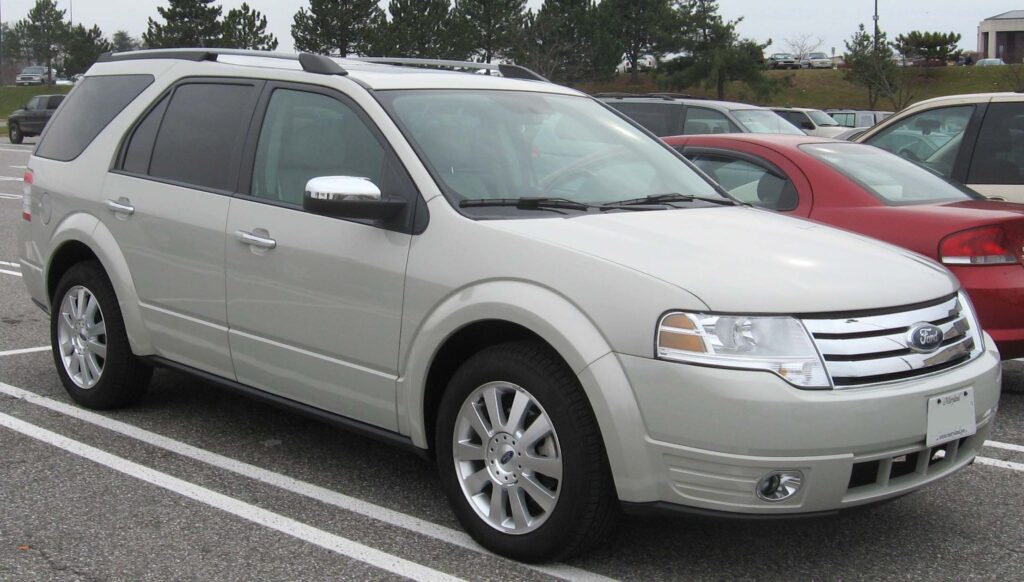
5. **1989-1995 Ford Taurus SHO**The original Ford Taurus was a monumental coup for Ford, revolutionizing the American sedan market with its distinctive, aerodynamic styling and practical appeal. Building on this success, the powerful SHO (Super High Output) version certainly earned it additional attention, transforming a family hauler into a genuine performance machine. And yet, for a couple of decades, the SHO remained largely an interesting, if somewhat overlooked, old sedan, with even clean examples selling for well under $10,000.
Fast forward to today, with SUVs dominating the market and the manual transmission sadly fading into obscurity, the original SHO formula now appears almost anachronistic. A Yamaha-developed DOHC V-6, paired with a stick shift, all housed within a four-door sedan body, represents the very antithesis of what most consumers would actually buy today. It is this delightful incongruity, however, that has allowed the SHO to age into its own unique appeal, making it a truly distinctive collectible.
Now, prices for the Taurus SHO are steadily climbing, not least because so many of these cars were unfortunately thrashed by young drivers who relished the idea of owning a cheap 220-hp performance sedan. This history of enthusiastic, sometimes reckless, ownership means that the remaining un-crumpled, clean examples are suddenly rare and highly desirable. The market has begun to recognize their intrinsic value and the unique driving experience they offer.
While the incredible deals of yesteryear are largely gone, and you’ll need to spend more than pocket change to acquire one, prices have yet to catch up to their true rarity and enthusiast appeal. A figure of $20,000 is likely to secure one of the world’s nicest examples, offering a fantastic blend of performance, practicality, and an undeniable cool factor. For those who appreciate an unexpected classic, now is the time to secure a pristine SHO before the wider market truly wises up and prices skyrocket further.
Car Model Information: 2018 GMC Yukon SLT
Name: Ford Taurus SHO
Manufacturer: Ford Motor Company
ModelYears: 1989–1999,2010–2019
Related: Ford Taurus
Class: Mid-size
Layout: Front-engine, front-wheel-drive layout
Designer: Jack Telnack
Categories: 1980s cars, 1990s cars, 2000s cars, 2010s cars, All articles with unsourced statements
Summary: The Ford Taurus SHO (Super High Output) is the high-performance variant of the Ford Taurus. Originally intended as a limited-production model, the SHO was produced for the first three generations of the model line, from the 1989 to the 1999 model years. After an 11-year hiatus, the name was revived for 2010, and continued in use until the 2019 discontinuation of the Taurus model line.
In contrast with standard versions of the Taurus, the Taurus SHO did not have a Mercury Sable counterpart; however, the 2010–2019 SHO served as the basis for the Ford Police Interceptor Sedan (replacing the long-running Ford Crown Victoria Police Interceptor). The final version is the only Taurus ever offered with the twin-turbocharged EcoBoost V6 engine.
The first three generations of the SHO were assembled at Atlanta Assembly (Hapeville, Georgia); the fourth generation was assembled at Chicago Assembly (Chicago, Illinois).
Get more information about: Ford Taurus SHO
Buying a high-performing used car >>>
Brand: Ford Model: Taurus SHO
Price: $21,893 Mileage: 111,357 mi.
Read more about: Rewind to Rad: The ’90s Cars Every Collector is Absolutely Dreaming About Right Now

6. **1994-1998 Toyota A80 Supra Turbo**The A80 Supra was, from its inception, a vehicle that commanded attention and respect, a true testament to the engineering prowess of the Japanese Bubble Era economy. Far from being an inexpensive vehicle, it arrived as a technological marvel, boasting a stupendously complicated sequential twin-turbo system paired with the legendary, massively overbuilt 2JZ inline-six engine. Its swoopy bodywork, often accentuated by that iconic, skyscraping rear wing, made an undeniable statement wherever it went.
Decades of Supras, and the 2JZ engine in general, cementing their legacy by consistently making legendary power on largely stock bottom ends, have ensured its continued presence on enthusiasts’ most coveted short lists. The car’s robust design and incredible tuning potential have only strengthened its mythical status, making it a dream machine for tuners and collectors alike. It’s a testament to over-engineering done right.
Today, the Supra’s appreciation is accelerating at an incredible pace, driven by a growing generation of potential owners whose incomes have swollen, contrasting sharply with the dwindling number of remaining clean examples. While the availability of JDM imports has somewhat diversified the market, it is the minty U.S.-market Turbo models that truly command the biggest premiums, often soaring to the tune of $175,000 and up. There’s still likely plenty of space until these reach their ultimate ceiling, so for those dreaming of owning this iconic piece of ’90s JDM history, there’s truly no time like the present to get into a Supra.
Car Model Information: 2024 Toyota Supra 3.0 Premium
Name: Toyota Supra
Caption: Toyota GR Supra (J29/DB)
Manufacturer: Toyota
Aka: unbulleted list
Production: unbulleted list
Class: Sports car
BodyStyle: fastback,coupé
Layout: Front-engine, rear-wheel-drive layout
Predecessor: Toyota Celica (A20)
Categories: 1980s cars, 1990s cars, 2000s cars, 2010s cars, 2020s cars
Summary: The Toyota Supra is a sports car and grand tourer manufactured and developed by the Toyota Motor Corporation beginning in 1978. The name “supra” is a definition from the Latin prefix, meaning “above”, “to surpass” or “go beyond”. The initial four generations of the Supra were produced from 1978 to 2002. The fifth generation has been produced since March 2019 and later went on sale in May 2019. The styling of the original Supra was derived from the Toyota Celica, but it was longer. Starting in mid-1986, the A70 Supra became a separate model from the Celica. In turn, Toyota also stopped using the prefix Celica and named the car Supra. Owing to the similarity and past of the Celica’s name, it is frequently mistaken for the Supra, and vice versa. The first, second and third generations of the Supra were assembled at the Tahara plant in Tahara, Aichi, while the fourth generation was assembled at the Motomachi plant in Toyota City. The 5th generation of the Supra is assembled alongside the G29 BMW Z4 in Graz, Austria by Magna Steyr. The Supra traces much of its roots back to the 2000GT owing to an inline-6 layout. The first three generations were offered with a direct descendant to the Crown’s and 2000GT’s M engine. Interior aspects were also similar, as was the chassis code “A”. Along with this name, Toyota also included its own logo for the Supra. It was derived from the original Celica logo, being blue instead of orange. This logo was used until January 1986, when the A70 Supra was introduced. The new logo was similar in size, with orange writing on a red background, but without the dragon design. That logo, in turn, was on Supras until 1991 when Toyota switched to its current oval company logo. The dragon logo was a Celica logo regardless of what colour it was. It appeared on the first two generations of the Supra because they were officially Toyota Celicas. The dragon logo was used for the Celica line until it was also discontinued. In 1998, Toyota ceased sales of the fourth-generation Supra in the United States. Production of the fourth-generation Supra for worldwide markets ended in 2002. In January 2019, the fifth-generation Supra, which was co-developed with the G29 BMW Z4, was introduced.
Get more information about: Toyota Supra
Buying a high-performing used car >>>
Brand: Toyota Model: Supra
Price: $59,995 Mileage: 1,454 mi.
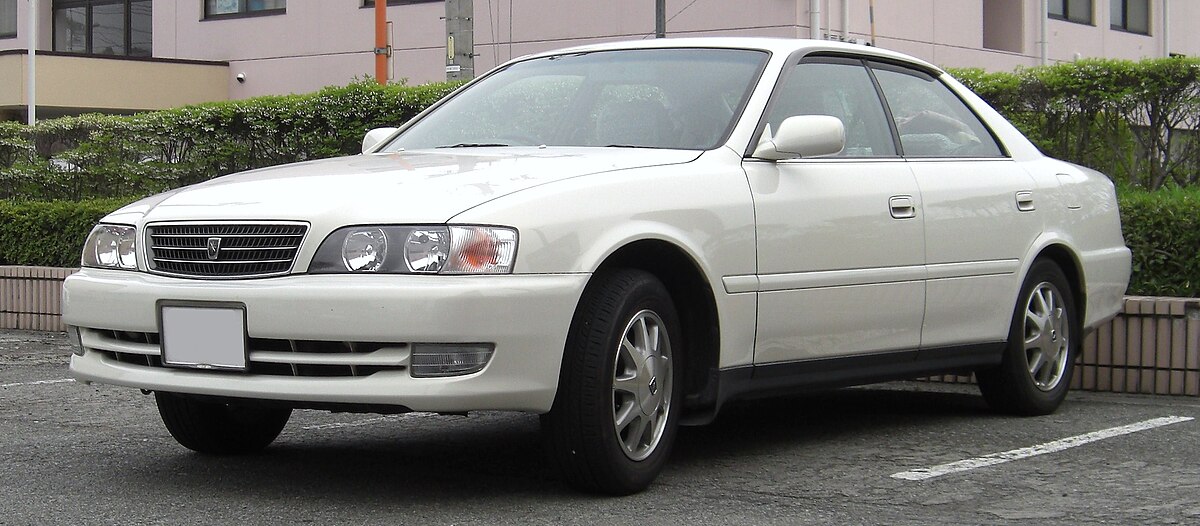
7. **1996-2001 Toyota Chaser/Mark II**Polyphony Digital’s groundbreaking Gran Turismo video game hit car enthusiasts’ brains like a runaway dekotora, profoundly expanding everyone’s knowledge of, and interest in, the approximately 597,000 weird variants of JDM cars included in the game’s colossal lineup. This seminal game, fertilized by the explosive popularity of Initial D and the global drifting phenomenon, planted crucial seeds that blossomed into the contemporary craze around Nissan Skyline GT-Rs and countless other coveted JDM imports. This era also unfortunately turned many of the rear-drive Japanese models available in North America into “drift tax” cautionary tales, making clean examples harder to find.
However, a few JDM imports still manage to brilliantly stay under the radar, offering incredible value and potential, and the Toyota Chaser/Mark II—virtually identical vehicles with only minor aesthetic distinctions—is unequivocally one you should be thinking about before the wider market truly catches on. In its stock form, the Chaser epitomizes the ultimate sleeper, with an outwardly unassuming appearance that might lead one to mistake it for a weirdly proportioned Camry. It’s a masterclass in understated cool.
But beneath that deceptively nondescript sheetmetal lies a powerhouse: a rear-drive-based, inline-six-powered chassis that effortlessly accepts both subtle and extreme modifications. This inherent adaptability and robust engineering make it a dream platform for enthusiasts looking to build a potent street machine or a capable track weapon. The performance potential hidden within its unassuming shell is truly astounding, awaiting a keen owner to unlock it.
Currently, prices for these gems still trail those of rear-drive Skylines of similar vintage, but that may not be the case for long. Importers are offering relatively clean stock models for less than—and sometimes much less than—$15,000, presenting a fantastic entry point. That said, it’s crucial to remember that not all Chasers are born performance machines, with configurations varying wildly from basic “taxicab” spec to the highly desirable Tourer V TRD turbocharged model, so diligent research and wise importation are absolutely essential.
Car Model Information: 2018 GMC Yukon SLT
Caption: 1996-1998 Toyota Chaser Avante (JZX100)
Name: Toyota Chaser
Manufacturer: Toyota
Production: 1977–2001
Predecessor: Toyota Mark II (X20)
Successor: Toyota Verossa
Class: unbulleted list
Categories: 1980s cars, 1990s cars, 2000s cars, Articles containing Japanese-language text, Articles with short description
Summary: The Toyota Chaser is a mid-size car produced by Toyota. In the beginning, Chasers were four-door sedans and hardtop sedans; a two-door coupé was available only for the first generation. It was introduced on the Toyota Mark II (X30) platform and was only available at Japanese Toyota Auto Store dealerships as their top-level model. The Chaser was produced for six generations; production ceased in 2001 when both it and the Cresta were replaced by the short-lived Verossa. The Chaser was one of Toyota’s “triplet sedans”: it, the Mark II, and the Cresta are rebadged models of the same car, sold through different dealership sales channels. The Chaser and its platform sisters are considered a class below the Crown. The Chaser offered a sportier image than the Mark II or the more luxury-oriented Cresta. The Chaser’s performance reputation benefited as the series and generations offered ever-increasing engine displacement. The addition of turbochargers and superchargers to growing engine displacement was offset by the fact that the Japanese Government taxed and regulated vehicle emission results. Larger engines offered more luxury, convenience, and suspension improvements as the generations progressed. Toyota chose not to install V6 engines in the Chaser for the entire series.
Get more information about: Toyota Chaser
Buying a high-performing used car >>>
Brand: Toyota Model: Chaser/Mark II
Price: $21,893 Mileage: 111,357 mi.

8. **1998 Suzuki Jimny**In the American market, Suzuki made an attempt to replace the beloved Samurai, known as the Jimny in most other parts of the world, with the larger Geo Tracker/Suzuki Sidekick. However, these replacements simply didn’t capture the same rugged charm and unique appeal that endeared the original mini-SUV to legions of fans. Meanwhile, in 1998, the third-generation Jimny made its debut internationally, presenting itself as a beautifully updated, modernized iteration of its highly capable predecessor—a vehicle that, regrettably, was never officially sold in America.
Despite its absence from the U.S. showrooms, a significant portion of what everyone cherished about the Samurai remains gloriously intact in the third-gen Jimny. This includes a remarkably rugged ladder frame, robust solid axles both front and rear, and a steadfast part-time four-wheel-drive system complete with a legitimate low range. These formidable attributes mean that despite being considerably more civilized than the somewhat tinny Samurai, the Jimny is an undeniably credible off-roader, boasting compact dimensions and a truly formidable array of readily available aftermarket enhancements.
Adding to its already significant appeal, left-hand-drive models of the Jimny are available for import, particularly via Europe, including the charming “Canvas Top” semi-convertible models that were skillfully built by Santana in Spain. For those seeking even more variety, narrower kei-specification models, equipped with smaller engines, were sold exclusively in Japan, while models featuring flares, extended bumpers, and larger engines were marketed as the Wide/Sierra variants. This diversity ensures there’s a Jimny for nearly every taste and purpose.
With current U.S. law, 2023 marks the very first year that the third-generation Jimny is legally available for import into America, opening up a whole new world of possibilities for enthusiasts. There was even a Mazda-badged version available in Japan for those who truly crave extra obscurity points. Astonishingly, ten grand should comfortably get you a nice one, with importation costs often included, making it an accessible and highly unique entry into the world of collectible 90s SUVs.
Read more about: Back to the Aughts: Rediscovering 7 Forgotten SUVs That Ruled Suburbia with Comfort and Style

9. **1993-2003 Volkswagen Eurovan**During the dynamic decade of the 1990s, if one harbored the desire for a compact pop-top camper van, the available options were, to put it mildly, quite slim. Among these limited choices, the most appealing to us, and indeed to legions of dedicated fans both then and now, were the various ingenious camper versions of the Volkswagen Eurovan, notably including the versatile Weekender and the full-featured Winnebago conversions. While the Eurovan wasn’t necessarily stellar in its non-camper iterations—the anemic early 2.5-liter I-5 models were barely adequate for daily duties—the simple question remained: what other viable option did you truly have for such a specialized vehicle?
What the Eurovan may have lacked in sheer gumption, it more than compensated for with an abundance of versatility and an undeniable, almost kitschy, appeal. Its interior presented a very “Euro” aesthetic, a distinctive charm that set it apart. Crucially, in its non-GL variants, the MV and Weekender models came thoughtfully equipped with dedicated gear for sleeping and camping built directly into the design, making spontaneous adventures a breeze. Despite these unique selling points, sales were unfortunately dismal upon its initial release, leading to 1993 being the sole model year for its first production run in the U.S. Mercifully, in 1995, Winnebago stepped in, importing some Eurovans to receive their comprehensive full camper conversion treatment, recognizing the niche potential.
Later, in 1999, the Eurovan officially made a triumphant return to the market, this time boasting a significantly more powerful VR6 engine, a welcome upgrade that addressed earlier performance concerns, and it would stick around for a few additional years. Even with the improved powertrain, it remained very much a niche product, and today, it stands as an older niche product, appealing to a specific yet passionate segment of enthusiasts. These later VR6 models inherently offer more power and a suite of better features, enhancing the overall driving and camping experience.
Thankfully, a healthy number of good Eurovan campers still exist and are available, presenting a much less expensive gateway into the burgeoning van camping hobby than opting for a pricey modern conversion. With prices typically ranging from roughly $35,000 to $45,000 for examples in decent shape, they offer excellent value. Moreover, there’s a significant and active knowledge base and a thriving community of enthusiasts dedicated to fixing the inevitable issues that crop up with these older vans. Seize this opportunity and get one while you can, before these unique and practical classics become even more sought-after.
Car Model Information: 2003 Volkswagen Eurovan MV
Name: Volkswagen Transporter (T4)
Manufacturer: Volkswagen
Aka: Volkswagen EuroVan (North America),Volkswagen Caravelle,Volkswagen Vanagon (Japan)
Production: 1990–2004
Assembly: Hannover,Poznań,Jakarta,Taoyuan City,Shah Alam,Alaminos, Pangasinan
Predecessor: Volkswagen Type 2 (T3)
Successor: Volkswagen Transporter (T5),Volkswagen Routan
Class: Light commercial vehicle
BodyStyle: van
Layout: Front-engine, front-wheel-drive layout,front-wheel drive
Platform: Volkswagen Transporter#T4
Transmission: Volkswagen 01M transmission,automatic transmission
Wheelbase: 2920 mm
Abbr: on (high roof)
Length: 4707 mm
Width: 1840 mm
Height: 1940 mm
Categories: 1990s cars, 2000s cars, All-wheel-drive vehicles, All articles needing additional references, Articles needing additional references from July 2015
Summary: The Volkswagen Transporter (T4), marketed in North America as the Volkswagen EuroVan, is a van produced by the German manufacturer Volkswagen Commercial Vehicles between 1990 and 2004, succeeding the Volkswagen Type 2 (T3) and superseded by the Volkswagen Transporter (T5).
Get more information about: Volkswagen Transporter (T4)
Buying a high-performing used car >>>
Brand: Volkswagen Model: Eurovan
Price: $12,888 Mileage: 161,759 mi.

10. **1992-1995 Honda Civic Si**In the vibrant landscape of ’90s performance cars, the early 1990s Civic Si hatchback, while somewhat overshadowed by its more aggressive Si coupe successor, currently resides in an absolutely undeniable sweet spot. This era of Civic Si perfectly balances age, desirability, and, most importantly, accessible performance, making it a fantastic target for keen collectors. The challenge, of course, lies in the ever-increasing difficulty of actually finding one in truly pristine condition.
Like many beloved Hondas of its generation, decades of rock-bottom prices, combined with the cars’ legendary reliability and exceptional efficiency, meant that a great many were either relentlessly thrashed by enthusiastic drivers or simply driven into the ground as dependable daily commuters. This history of hard use has made unmolested examples a genuine rarity. However, the current collector car environment is a boon for these cars, as many hard-to-find “cream puffs” are now gradually emerging from long-term storage units and finding their way onto auction sites and forum listings, where they generally trade for as little as $10,000. For top-tier examples, however, you’ll likely pay closer to $20,000, though these Si models remain relatively affordable when compared to other similar-spec Hondas.
The 1992 Civic Si made its debut equipped with a screaming VTEC I-4 engine, all wrapped in a sporty and remarkably smooth hatchback body style that captivated a generation. While it only produced a modest 125 horsepower when brand new, the sky’s the limit for modifications, whether you choose to start with the robust stock block or embark on a more ambitious swap to a B-, K-, or any other performance-oriented engine series. That said, even a bone stock Si is an absolute charmer, offering a delightful lightness and exhilarating zip that you simply don’t experience with today’s much heavier front-wheel-drive cars. And, of course, you absolutely cannot beat the VTEC’s utterly manic pull once the cam profile dramatically switches over, delivering that iconic Honda rush.
Lastly, while undeniably tiny by contemporary automotive standards, the Civic Si is surprisingly practical, featuring a nifty two-piece rear hatch that enhances its utility and a clean, fun interior design that remains engaging. This combination of thrilling performance, nimble handling, and unexpected practicality makes the early 90s Civic Si a wonderfully rewarding collectible for those who appreciate a truly engaging driving experience without breaking the bank. It’s a testament to Honda’s ‘Golden Era’ engineering.
Car Model Information: 2018 GMC Yukon SLT
Caption: 2024 Honda Civic liftback
Manufacturer: Honda
Aka: ubl
Production: 1972–present
Class: Subcompact car
BodyStyle: fastback,Sedan (automobile)
Layout: Front-engine, front-wheel-drive layout,Front-engine, four-wheel-drive layout
Predecessor: Honda N600,Honda Z600
Categories: 1980s cars, 1990s cars, 2000s cars, 2010s cars, 2020s cars
Summary: The Honda Civic is a series of automobiles manufactured by Honda since 1972. As of 2023, the Civic is positioned between the Honda Fit/City and Honda Accord in Honda’s global passenger car line-up. It is one of the best-selling automobiles in history, with over 27 million units sold through 2021. The first-generation Civic was introduced in July 1972 as a two-door fastback sedan, followed by a three-door hatchback that September. With a 1,169 cc transverse engine and front-wheel drive, the car provided good interior space despite its small overall dimensions. Initially gaining a reputation for being fuel-efficient, reliable and environmentally friendly, later iterations have become known for performance and sportiness, especially the Civic Si, SiR, and Type R versions. It is currently in its eleventh generation, which has been produced since 2021. The Civic has often been rebadged for international markets, and it served as the basis for the Honda CR-X, the Honda CR-X del Sol, the Concerto, the first generation Prelude, the Civic Shuttle (which later became the Orthia) and the CR-V (which in turn was used as the basis for the Honda FR-V).
Get more information about: Honda Civic
Buying a high-performing used car >>>
Brand: Honda Model: Civic Si
Price: $21,893 Mileage: 111,357 mi.

11. **1994-1995 Ford Mustang SVT Cobra**The iconic Fox Body Mustangs are currently basking in their well-deserved day in the sun, with really clean examples steadily creeping up into legitimate collector car territory, especially highly coveted rarities like the ’93 SVT Cobra, a pristine example from Ford’s then-new Special Vehicle Team (SVT) division. However, the subsequent SN95-generation Mustang, with only a few notable exceptions, has not yet fully crossed that magical threshold of mainstream collectability that its predecessor now enjoys.
While dedicated Mustang enthusiasts have always kept a keen eye on the SVT versions of the SN95, particularly the Cobras, prices for these specific models haven’t yet seen the dramatic leap made by some of the other cars featured on this list. Today, a nice ’94-95 Cobra coupe or convertible typically fetches around $20,000, representing solid value for a performance-oriented pony car with a rich lineage. It’s a fantastic opportunity for collectors to get in before the market fully appreciates their potential.
These early SN95 SVT Cobras offer a potent blend of distinctive ’90s muscle car aesthetics and impressive performance, making them truly compelling. While they may not command the stratospheric prices of certain Fox Body rarities just yet, their limited production numbers, the continuous growth of the enthusiast market, and the enduring appeal of the Mustang brand strongly suggest that their appreciation is imminent. For savvy collectors seeking an accessible entry into high-performance 90s American muscle, securing a clean ’94-95 SVT Cobra now presents an outstanding investment opportunity before the wider market inevitably catches on and prices begin to truly climb.
Car Model Information: 2008 Ford Mustang GT Premium
Name: Ford Mustang
Caption: 2018 Ford Mustang GT 5.0
Aka: Ford T5 (Germany)
Manufacturer: Ford Motor Company
Production: March 1964 – present
ModelYears: 1965–present
Class: Unbulleted list
BodyStyle: Unbulleted list
Layout: Front-engine, rear-wheel-drive layout
Categories: 1970s cars, 1980s cars, 1990s cars, 2+2 coupés, 2000s cars
Summary: The Ford Mustang is an American automobile manufactured and marketed by Ford since 1964, as Ford’s longest nameplate in continuous production. Currently in its seventh generation, it is the fifth-best selling Ford car nameplate. The namesake of the “pony car” automobile segment, the Mustang was developed as a highly styled line of sporty coupes and convertibles derived from existing model lines, initially distinguished by its pronounced “long hood, short deck” proportions.
Originally predicted to sell 100,000 vehicles yearly, the 1965 Mustang became the most successful vehicle launch since the 1927 Model A. Introduced on April 17, 1964 (16 days after the Plymouth Barracuda), over 400,000 units were sold in its first year; the one-millionth Mustang was sold within two years of its launch. In August 2018, Ford produced the 10-millionth Mustang; matching the first 1965 Mustang, the vehicle was a 2019 Wimbledon White convertible with a V8 engine.
The success of the Mustang launch led to multiple competitors from other American manufacturers, including the Chevrolet Camaro and Pontiac Firebird (1967), AMC Javelin (1968), and Dodge Challenger (1970). It also competed with the Plymouth Barracuda, which was launched around the same time. The Mustang also had an effect on designs of coupes worldwide, leading to the marketing of the Toyota Celica and Ford Capri in the United States (the latter, by Lincoln-Mercury). The Mercury Cougar was launched in 1967 as a unique-bodied higher-trim alternative to the Mustang; during the 1970s, it included more features and was marketed as a personal luxury car.
From 1965 until 2004, the Mustang shared chassis commonality with other Ford model lines, staying rear-wheel-drive throughout its production. From 1965 to 1973, the Mustang was derived from the 1960 Ford Falcon compact. From 1974 until 1978, the Mustang (denoted Mustang II) was a longer-wheelbase version of the Ford Pinto. From 1979 until 2004, the Mustang shared its Fox platform chassis with 14 other Ford vehicles (becoming the final one to use the Fox architecture). Since 2005, the Mustang has used the D2C platform, unique to the Mustang.
Through its production, multiple nameplates have been associated with the Ford Mustang series, including GT, Mach 1, Boss 302/429, Cobra (separate from Shelby Cobra), and Bullitt, along with “5.0” fender badging (denoting 4.9 L OHV or 5.0 L DOHC V8 engines).
Get more information about: Ford Mustang
Buying a high-performing used car >>>
Brand: Ford Model: Mustang
Price: $16,785 Mileage: 81,832 mi.
As we’ve journeyed through this captivating collection of 1990s automotive treasures, it becomes unequivocally clear that this decade, far from being an “automotive dark age,” was a veritable goldmine of innovation, distinct design, and raw driving passion. From technological marvels that pushed boundaries to understated sleepers brimming with potential, and from rugged utilitarian legends to highly sought-after performance icons, these machines are more than just cars; they are tangible slices of history, each offering a unique story and an unparalleled driving experience. The market is vibrant, the enthusiasm is palpable, and for those ready to embrace the distinct charm of the ’90s, the road ahead for these modern classics is filled with excitement and appreciation. Don’t miss your chance to own a piece of this remarkable era before they become mere relics of what could have been.

